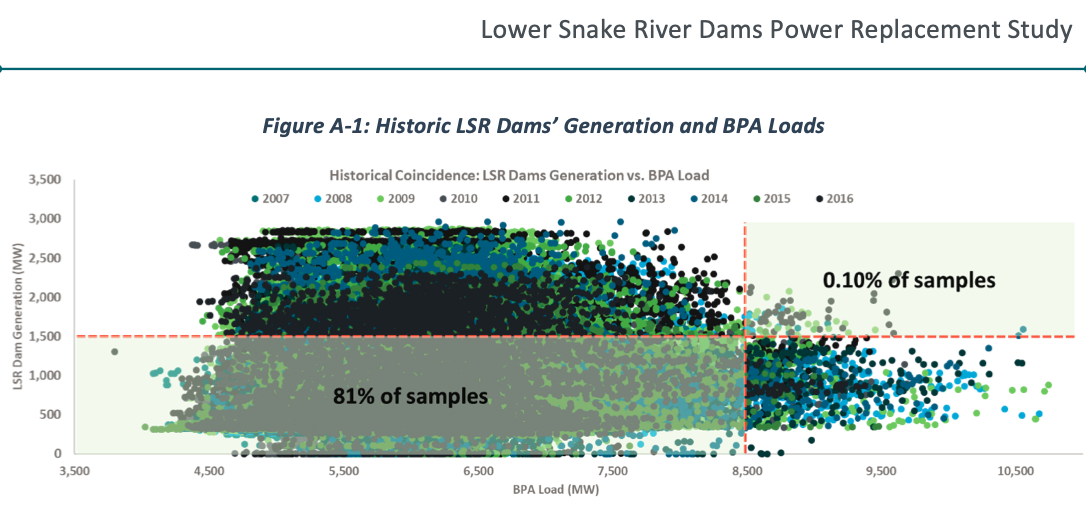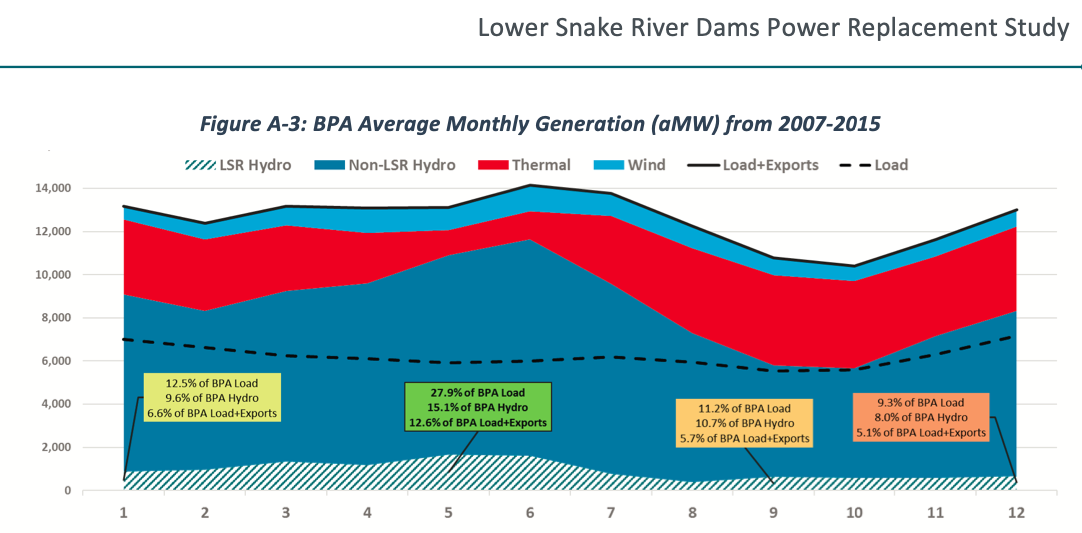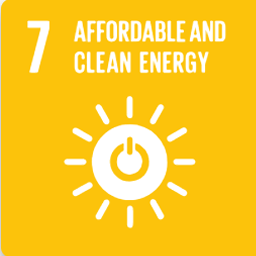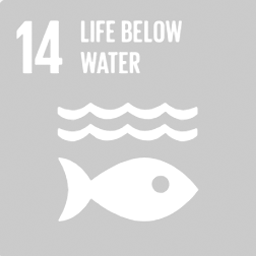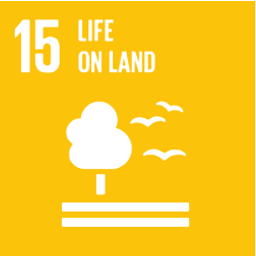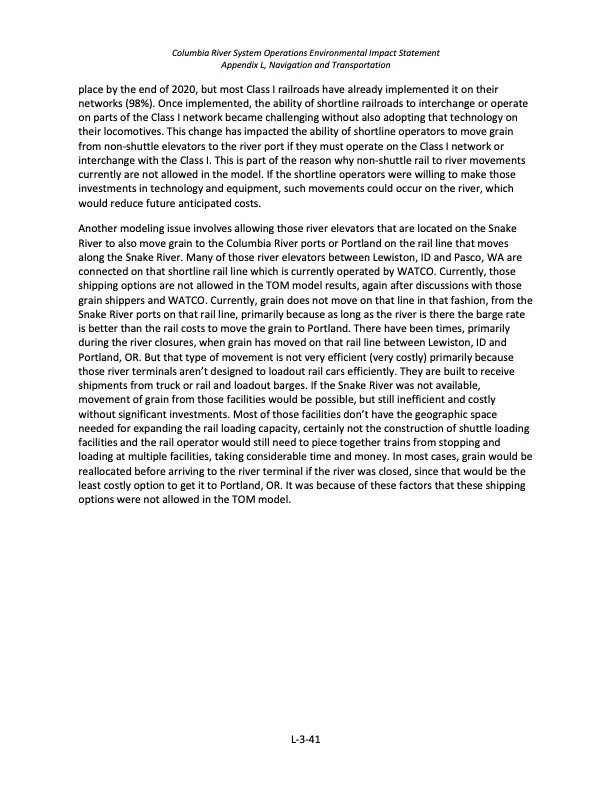Lower Snake River - Impact Area Special Groups
Participating stakeholders will discuss, update and finalize this section. The Group’s objective is to discuss solutions on how to restore the Snake River while also meeting the impact area needs and, most times, improving on what is thought to be possible today. To add your voice, to discuss your concerns and to collaborate on a mutual solution, please Join Us.
Challenges & Benefits - Energy
Status Quo - Reason for Inaction
…
The energy value of the LSR Dams is also seasonal. Most of their energy output is in the spring. During March, April, May, and June the LSR Dams provide roughly 1,441 aMW of power output. By contrast, from July through February the LSR Dams generate roughly 676 aMW—more than 50% less than during the spring period.
Figure A-3 shows how these generation levels match up with BPA’s other resources and total power needs, including BPA loads as well as exports to other power areas.
Known Benefits - Reason for Action
Claim: “The four Lower Snake River Dams are critical to America’s economy and the Pacific Northwest’s electrical grid.” Ref. Congressman Cliff Bentz 4/8/24 Letter to Office of Management and Budget.
Proving otherwise:
Conservation in Pacific Northwest region has replaced one Lower Snake River (LSR) dam each year since 2000. Looking forward, the Northwest Power & Conservation Council (NPCC) has identified 740aMW cost-effective measures available by 2027.
LSR hydropower is surplus to NW energy needs. In fact, Energy Strategies found only two hours in 10 years in which LSR hydropower staved off power purchases by the federal electricity-marketing agency, Bonneville Power Administration (see Figure A-1: Historic LSR Dams’ Generation and BPA Loads).
The Department of Energy commissioned Energy and Environmental Economics (E3) report that a future with “Deep Decarbonization” is cheaper, with fewer renewable builds needed, when LRS dams are removed (see E3’s page 41 discussion of results for a reasonable ELCC curve of battery storage, replacing the Electric Load Carrying Capacity (ELCC) curve assumed for the main section of the report).
Notably, any good model of the region’s electric grid will show similar result. LSR “must-run” hydropower forces the curtailment of other renewables when demand for energy is lacking (e.g. in the middle of the night).
During the cold of winter, when Northwest energy demands are highest, the Idaho mountain-fed Lower Snake River has less river flow; less “fuel” available for power production.
The best model to refute/support the Congressman Bentz’s contention (above), is NPCC’s publicly and transparently redeveloped GENESYS. Oddly, that model has yet to inform the region.
Though challenged in the Ninth Circuit Court, NPCC has steadfastly refused to allow their state-of-art model to inform the public on this important question: What are the economic impacts to electricity ratepayers upon LSR dam breaching while system adequacy and reliability is assured?
Authoritatively answering that question, a $40-million NEPA process found that BPA customer’s rate pressure would be reduced by 5.1% immediately and by 15.1% once Idaho’s salmon are delisted from ESA protection.
NPCC’s legal defense (that prevailed in court) held that their foundational statue requires analysis of an “adequate, economic, efficient and reliable power system” but statute does not explicitly require that analysis to consider the removal of existing federal dams, even if LSR dam removal would be economically beneficial.
Washington State’s score for United States Sustainable Development Goals is 58.1%. Of 17 overall goals, breaching the four Lower Snake River dams will have a positive impact on the 7 below.
Challenges & Benefits - Transportation
Pro Dam Reason for Inaction
…
Known Benefits - Reason for Action
Claim: “Loss of barging would increase grain shipping costs by 30 to 50 cents per bushel.” (What if the lower Snake River dams are demolished?, by Matthew Weaver Capital Press, April 4, 2024 ).
Proving otherwise:
“The cost to transport wheat, which accounted for 87% of the downbound tonnage on the Lower Snake River in 2018, is estimated to increase by $0.07 - $0.24/bushel”, from Columbia River System Operations Environmental Impact Statement (CRSO EIS) Executive Summary page 32.
Somewhat successfully, Columbia/Snake River Irrigators Association pointed out in their comments to the NEPA process, that the draft EIS numbers were too high (Appendix L, Annex A). Oddly, the Final EIS report did not update the analysis.
“The navigation-wheat interests are deathly afraid of an objective analysis of the Lower Snake River rail transport alternative,” said Darryll Olsen, Columbia-Snake River Irrigators Association (What if the lower Snake River dams are demolished?, Capital Press, April 4, 2024).
Competition with rail is the #1 issue, and can be easily solved:
Solutionary Rail shows how a reconnected shortline (by acquiring two 8-mile sections currently abandoned) is a great solution for bringing competition to the Big Rail monopoly.
“Dealing with the dams, though, seems easier than moving the temperature dial for the Northern Pacific Ocean.” Don Schwerin, Ag and Rural Caucus of Washington State Democratic Party, who sees promise in Solutionary Rail’s proposals as explained in Let’s Plan for a Transition, Capital Press, 2/16/24.
Washington State’s score for United States Sustainable Development Goals is 58.1%. Of 17 overall goals, breaching the four Lower Snake River dams will have a positive impact on the 3 below.
Challenges & Benefits - Irrigation
Pro Dam Reason for Inaction
…
Known Benefits - Reason for Action
Authoritatively, the Lower Snake River Juvenile Salmon Migration FS/EIS (2002 EIS) that governs the Lower LSR dams tells us that taxpayers and BPA ratepayers need not compensate irrigators for a loss of 80-feet pumping head, consequent to LSR Dam breaching. If not funded through Congress, then the State of Washington is welcome to do so.
“If a natural River is selected, Congress may or may not choose to fund these non-Federal modifications.” (CRSO EIS, Appendix D, Chapter 8)
That same 2002 EIS estimates that continuing to pump irrigation water to 36 farmers on Ice Harbor pool (after LSR breaching, 80-feet of additional pumping head would be required):
$436 million = Direct cost 267 + Contingency $100 + Escalation $69. Ref. Appendix D. See high level recap or Chapter 8: Non-federal Modifications for details.
Columbia/Snake River Irrigators provides a much lower estimate for continuing to pump irrigation to farmers:
$92-184 million for direct station-by-station reconstruction costs for around 92,500 irrigated acres served by the Ice Harbor and Upper McNary Pools.
Yet lower, is an estimated by engineer Rob Sampson, A brief review of the impacts to irrigated farmland from breaching the four dams on Lower Snake River:
$18 million providing an installed price for pipes and pumps for the 80-feet of additional pumping head for irrigators on Ice Harbor pool.
Washington State’s score for United States Sustainable Development Goals is 58.1%. Of 17 overall goals, breaching the four Lower Snake River dams will have a positive impact on the 3 below.
Challenges & Benefits - Tribal Rights
Pro Dam Reason for Inaction
none identified.
Shoshone-Bannock Tribes’ CRSO EIS Tribal Perspectives Document April 2019, Appendix P excerpt:
The Shoshone-Bannock Tribes (Tribes) of the Fort Hall Indian Reservation, located in Southeast Idaho, appreciate the co-lead agencies providing this opportunity to hear our perspective on the Columbia River System Operations (CRSO) and the Environmental Impact Statement (EIS) currently being developed for the Columbia River System (System). As a cooperating agency, federally recognized Tribe, and Fish Accord partner, the Tribes have a unique view of the issues surrounding anadromous fish management in the context of the operations of the System. Given the limiting factors affecting the recovery of anadromous fish throughout the System, the Tribes believe it is time to select an alternative that restores the systems and affected unoccupied lands to a natural condition. This includes the restoration of component resources to conditions which most closely represents the ecological features associated with a natural riverine ecosystem. Based on the range of feasible alternatives, the nearest alternative to this perspective would be for the co-lead agencies to select and implement Multiple Objective - 3 (MO3).
The Tribes perspectives are based upon our reliance on the natural riverine ecosystem of the Columbia River Basin (Basin) for subsistence since time immemorial. This reliance was recognized and guaranteed through the Treaty reserved right to hunt on unoccupied lands of the United States. Our rights and interests are directly impacted by the operation, maintenance, and configuration of the System. To protect our rights and interests we are participating in the development of the EIS as a cooperating agency. Since our perspective can be broader than the boxes of National Environmental Policy Act (NEPA) allows for and our expanded definitions of Indian Trust Assets and Cultural Resources cannot be heard we feel that the Tribal Perspective section is a welcomed opportunity to express our values, concerns, and risks to the Tribes culture and Treaty reserved rights.
As is the fate of the Salmon, the continued existence of our culture is at risk of extinction because of the environmental inequities that have been forced upon our people. Over the last 200 years we have endured brutal atrocities against our people, the taking of our lands, the depletion of our food and medicinal resources, the political interests of the majority, and the legal conclusions that now govern how our culture can exist. The equitable distribution of environmental risk and benefits has not been afforded to the Shoshone and Bannock peoples, and as it has been done throughout history, we are forced to shoulder the burdens of conservation. Because what is at stake now is our Treaty reserved subsistence lifestyle.
Populations of salmon, including those in the Snake River subbasin, decreased substantially coincident with the construction of hydroelectric dams on the Lower Snake and Columbia rivers and other anthropogenic impacts across the landscape. Currently, salmon occupy 40% of their historic habitat in the Basin. Salmon in the Snake River subbasin have been completely eliminated above the Hells Canyon Complex and abundance in the Salmon River is estimated at 0.5% of its historical runs size. Snake River chinook and steelhead smolt to adult returns (SARs) are generally less than 1% — far below the necessary standard for population replacement or to meet the Northwest Power and Conservation Council goals of 2-6%. Reducing current annual Tribal member consumption to 1.2 pounds of salmon compared to historical use of about 700 pounds per person. The loss of salmon threatens traditional cultural practices that are a vital part of our Tribal identity.
Known Benefits - Reason for Action
Treaties between the United States and the tribes, signed in the mid-1800’s, gave the tribes the right to fish at all usual and accustomed places. These treaties are the Supreme Law of the land.
Washington State’s score for United States Sustainable Development Goals is 58.1%. Of 17 overall goals, breaching the four Lower Snake River dams will have a positive impact on the 2 below.
Challenges & Benefits - Climate
Status Quo - Reason for Inaction
xxx
Known Benefits - Reason for Action
Pacific salmon play a key role in transporting nutrients from marine to freshwater and terrestrial ecosystems. Effectively, anadromous fish are important nutrient pumps.
Using Project Drawdown assumptions, an estimated 90MMT of carbon sequestration has been lost by the degradation of Idaho’s forests by halting this once bountiful “nutrient pump”.
Rewilding Institute, a One4Salmon partner, is reviewing/refining the above estimate of 90MMT carbon sequestration potential being recoverable.
Years ago, methane emissions from Lower Snake Reservoirs were estimated to be 86,000 MMT per year. More recently, a Patagonia-sponsored report has doubled that estimate, suggesting that “lifecycle greenhouse gas emissions” are “emitting approximately 1,800,000 metric tons of carbon dioxide equivalent per year
Washington State’s score for United States Sustainable Development Goals is 58.1%. Of 17 overall goals, breaching the four Lower Snake River dams will have a positive impact on the 3 below.
Challenges & Benefits - Wild Salmon
Status Quo - Reason for Inaction
xxx
Known Benefits - Reason for Action
“For Snake River stocks, the centerpiece action is restoring the lower Snake River via dam breaching.” Ref. Rebuilding Interior Columbia Basin Salmon and Steelhead, NOAA Fisheries, 9/30/22
Snake River salmon populations are currently hovering on the brink of extinction. The science is clear and compelling, supported by decades of rigorously peer-reviewed published reports and manuscripts: removing the four lower Snake River dams is essential to avoiding extinction and rebuilding populations to healthy and abundant levels. There is no credible scientific dissent. Inaction will lead to extinction. Ref. American Fisheries Society, Congressional Briefing Snake River Rebuilding Fact Sheet.
The Columbia Basin Partnership established a “healthy and harvestable” goal for Snake River salmon (NOAA Fisheries 2020: A Vision for Salmon and Steelhead), and intended to be consistent with U.S. treaty and trust obligations to Tribes.
Quasi Extinction - 77% Spring / Summer Chinook populations are predicted to be at or below 50 spawners by 2025.
Washington State’s score for United States Sustainable Development Goals is 58.1%. Of 17 overall goals, breaching the four Lower Snake River dams will have a positive impact on the 2 below.
In the Pacific Northwest, the Columbia River basin dominates the landscape stretching across 250,000 square miles and seven states. The Snake River, the main tributary of the Columbia River, was once free flowing and teeming with salmon and steelhead with more than two million fish returning annually. Between 1961 and 1975, the U.S. Army Corps of Engineers constructed four dams on the lower Snake that dramatically reduced survival of migrating salmon and transformed the once free-flowing river into a series of warm, slow moving reservoirs. Today, only 1-2% of the historical numbers of wild fish return to the Snake River. Despite billions spent on habitat improvement and fish passage, extinction is looming for the once abundant anadromous fish. Snake steelhead, Snake fall Chinook, Snake spring/summer Chinook are listed as threatened, Wild Snake sockeye are endangered, and Snake coho are already extinct. — American Fisheries Society (AFS)
Challenges & Benefits - Orca
Status Quo - Reason for Inaction
xxx
Sharon’s three alternatives: PICK ONE TO REPLACE THE INITIAL DRAFT ON THE LEFT!
Known Benefits - Reason for Action
Wild Salmon are bigger than hatchery fish, the bio energetics.
Similar to fishermen, an orcas aims to catch the Big Fish.
Graphic of projected populations that Heather showed recently.
Washington State’s score for United States Sustainable Development Goals is 58.1%. Of 17 overall goals, breaching the four Lower Snake River dams will have a positive impact on the 2 below.
ORCAS
Within the United States, Southern Residents rely heavily on salmon from the Columbia/Snake River Basins. Historically the Snake River system contributed a significant portion. According to NOAA, the risk of near-term extinction without adequate availability of Chinook salmon remains an immediate threat.
From the Center for Whale Research; Salmon abundance (specifically Chinook salmon) is the key to the survival of our Southern Resident orca population. Based on estimates of their food requirements, the average Southern Resident orca (SRKW) must consume 18-25 adult salmon daily to meet its energy requirements.
Chinook salmon are a crucially important prey source due to their high fat content and nutritional value. The weight of today’s salmon pales in comparison to those historically available to orcas. Smaller fish means more effort and energy are required for adequate nutrition. Not a winning combination.
Long before the marine mammal captive industry set their sights on Southern Resident Killer Whales, which decimated this local population in the 1960s, clan size was estimated historically at a minimum of 140.
In 2005, NOAA listed the Southern Residents as endangered when the number slipped to 88. A decade later, there were 81. In 2015, these orcas landed in NOAA’s top eight “Species in the Spotlight”. And, today, the downward trend continues with only 75 remaining as of July 1, 2023.
The Species in the Spotlight are those where NOAA determines immediate, targeted actions can stabilize the population and prevent extinction. After nearly a decade being ‘spotlighted’, population trends continue downward. A dismal result.
The additional risk factors of noise in the marine environment and toxic contamination compound the impact of inadequate food.
The four Lower Snake River dams are killing salmon necessary to sustain the Southern Resident Orcas. They create a plethora of river conditions harmful to salmon & steelhead runs.
Harmful conditions include;
· Blockage to historical natal streams
· High temperature slack water reservoirs that weaken and kill salmon
· What else?
Refs: Wild Salmon & Orca
Challenges & Benefits - Local Economy
Status Quo - Reason for Inaction
xxx
Known Benefits - Reason for Action
“Salmon Mean Business” in Idaho. Quote Mike Simpson
BPA rates going down. Fishing tourism is big wherever fish are healthy and abundant.
Washington State’s score for United States Sustainable Development Goals is 58.1%. Of 17 overall goals, breaching the four Lower Snake River dams will have a positive impact on the 3 below.
Challenges & Benefits - Legal Review
Known Benefits - Reason for Action
Ellie?
Energy Impact Area - Call for Action
We have the answers to move us into the 21st century and beyond utilizing the modernized knowledge we’ve garnered since the 60s when the dams were built.
Through unification, we call on all Energy experts to work through challenges instead of creating grid-locks to demonstrate how the region can be modernized and the NW ecosystem restored for future generations.
Explore the viability and economic impact of available alternative energy sources to meet regional needs.
Consider phased approaches and other methods to begin the restoration process while there’s still time for wild salmon recovery.
Additional Resources
TBD by Subject Leaders and Experts
This section to be developed by the Leads in the Unification.
If you are an Energy expert who wants to collaborate in restoring the Snake River please Join Us.
The Answers are Out There
We only need to ask HOW.

